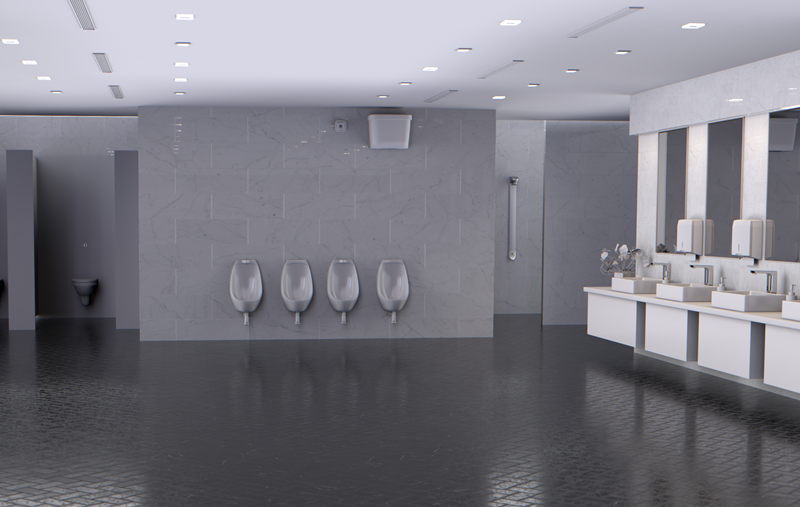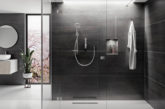
Improvements in urinal flushing controls over the past 20 years mean that significant water savings can be achieved when urinals are upgraded – and with many organisations aiming to become more water efficient, this can increase opportunities for plumbing installers. Martyn Andreoli, National Sales Manager at Cistermiser, explains more.
Urinals are a standard feature in commercial and public sector washrooms, being functional as well as easy to clean and maintain. Fortunately, due to improvements in flushing controls, urinals are quickly becoming more water efficient – which is encouraging building owners and managers to upgrade and refurbish their facilities.
The need to save water has become a more prominent issue in recent years. According to Waterwise, population growth, rising water use and climate change will increasingly affect future water resources in the UK, and if water efficiency action is not improved, the country could face water shortages by 2050.
Many businesses and public sector organisations are proactively investing in water saving solutions to help them meet environmental standards or gain BREEAM credits. Becoming more water efficient also helps to lower water bills – most non-household premises have water meters to measure consumption, on which water bills are based. As the appetite to increase water efficiency grows, so do the opportunities for installers.
Significant savings
Washrooms are an ideal place to start, and urinals offer the potential for significant savings. While they generally use less water than toilets (because they require a smaller volume of water for flushing), their water consumption remains significant – in offices accounting for approximately 20% of water use, and traditional flushing systems potentially using upwards of 850 litres of water a day. Modern flushing technologies can offer significant reductions in water consumption and costs – indeed, thousands of pounds per year could be saved.
A range of solutions are available, and it’s important for installers to understand how they perform so they can best advise their customers, ultimately helping them to reduce their water consumption.
Urinal operation
The way traditional urinals operate wastes water; the flushing cycle would be set by adjusting a petcock fitted in the cistern’s inlet pipe – this would match the typical usage pattern but wouldn’t take account of changing occupancy levels. So even if a building was vacant, intermittent flushing would continue, typically wasting significant litres of water.
This inefficient flushing technique is no longer available for new systems or upgrades, following the introduction of The Water Supply (Water Fittings) Regulations 1999. The regulations put stipulations in place to limit the amount of water that flushing devices are allowed to use, as well as requirements for isolating valves and time controls. In addition, flushing arrangements will need to incorporate a backflow prevention arrangement or device, again laid out in the regulations.
Various solutions are available that meet regulations (installers should look for WRAS approved products) while also being simple and straightforward to install. The type of solution selected will largely depend on the property’s water pressure, whether a mains supply to the urinals is available, if there is an existing cistern to retain, and the customer’s budget.
Sensor-controlled valve
The most comprehensive solution – offering greater potential for savings – is a direct, mains-flushing sensor-controlled valve. Individual urinal bowls are automatically flushed after each use and the need for a cistern is eliminated – ensuring the highest level of hygiene while still conserving water. When the sensor detects a person, water is released for flushing.
Direct flush systems can be powered by mains electricity or batteries. Our direct flush products can reduce water usage significantly, with a return on investment potentially achieved in just eight months.
Infrared control valves
Infrared control valves are a great alternative if a cistern is installed. A small amount of water is released into the cistern every time a passive infrared sensor (which is installed on pipework, walls or the ceiling) senses movement around the urinals. Once the water in the cistern reaches a set level, the urinals are automatically flushed.
Again, these can be powered by mains electricity or batteries. Our infrared control valve (IRC) can minimise water usage by 80% when used in standard mode compared to a petcock system and offers a return on investment of 10 months – this can be further enhanced by using the eco mode.
Hydraulic control valves
Meanwhile, hydraulic control valves provide a ‘fit and forget’, simple, reliable solution. They are installed in-line with the inlet pipe to an auto-siphon urinal cistern which will only fill and can only flush when the washroom is in use. A measured amount of water is released into the cistern every time the water pressure drops, as this indicates the washroom (and therefore potentially the urinal) is being used. Flushing occurs once the water in the cistern reaches a set level. These controls can potentially reduce water use by over 75%. They function at different water pressures and do not require an electrical supply or battery power.
Modern flushing solutions can usually be configured to incorporate hygiene flushes, which reduce odours when washrooms are not in use.
Flush-free
In addition, installers may be aware of the flush-free urinals on the market, which rely on chemicals. While they might be beneficial in certain environments (where space is highly limited for example), they are likely to require more day-to-day maintenance than conventional urinals.
When urinals are refurbished, the primary consideration for the building owner or manager is likely to be to reduce water consumption. By understanding more about what’s on offer and the potential water savings that can be achieved, plumbing installers can be in an ideal position to take advantage of the opportunities available.












